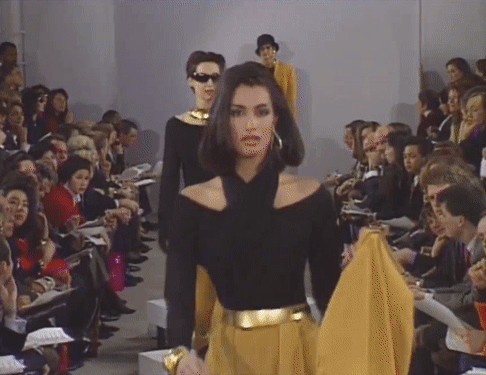Don't wanna be here? Send us removal request.
Text
Consumers view through a single lens. Brick-and-Mortar vs. Online Retail
Megan Jenkinson
Fashion Communication, Northumbria University
Has the brick-and-mortar retail stores been taken by the hands of e-commerce? Well yes! There seems to be a correlation in a steep drop in business at physical stores and growing online sales. However, while people enjoy the convenience of online shopping consumers are still drawn to the physical stores to tangibly touch items, which I believe makes it easier to purchase and an easier way to process returns or exchanges!
There is a major benefit of staying at home and not having to interact with other human beings, right? I personally love sitting in my bed, online shopping however brick-and-mortar stores have had a hard time dealing with their competitor’s rising popularity.
But let’s not ignore the ‘touch-and-feel’ aspect and consider the “look before you buy” experience which requires a certain level of physical presence. There are some things people just can’t buy online, would you purchase your new mattress online? No!
On the flip side, Amazon have launched Prime Wardrobe, which can be described as ‘bringing the fitting room to you’, where you can try new styles before you buy them.
Has online shopping won? No. People have always loved the physical ‘feel’ of a garment, knowing how it will fit you, if it runs too small or big and these questions cannot be answered without the item of clothing in your hands. Nevertheless, there are so many options to choose from, where everything is at your fingertips.
In-store shopping is just something else though, it’s the experience! In-store shopping help with recommendations and the customer service people are wanting. But sometimes it isn’t that easy to just pop to the shopping centre!
There are pro’s and con’s on both sides, whether engaging with consumers via mobile or entering the store, retailers have a lot to gain by unifying their channel strategies.
0 notes
Text
The Rise of Sustainable Fashion
Megan Jenkinson
Fashion Communication, Northumbria University
Sustainability will most defiantly be the centre of all innovation in the fashion industry in 2018. 2018 was a stage for certain causes to step front, where sustainability in fashion has become a topic most people are speaking about. The fashion industry is the second-most polluting industry in the world.
Designers have given their production cycles a rethink, others are reducing their carbon footprint, and some has made the switch from real fur to faux.
Fashion companies have already started to embrace the important of sustainability leading companies to close the loop of the entire product lifecycle by means of recycling and regeneration. This then focuses on the economy, sustainability and will hopefully be a part of the entire fashion value chain.
Consumer attention is growing on sustainability issues, where people are becoming more aware with what is going on and what is happening to our environment because of the fashion industry. Sustainability leaders can use this to their advantage where they can use technology across materials, products and processes to focus on the potential to drive and strengthen the means of process reengineering and improve transparency.
This can allow fashion companies to find potential opportunities across the value chain, as there are so many different ways companies can work with sustainability in order to create innovative materials, such as sustainable fibres. There is also a gap in the market for this due to many companies only just changing, so there are many ways that companies can innovate on products that already exist.
Vogue recaps on some of the biggest sustainability highlights and game changers of 2017.

A faux leather look at Stella McCartney’s Spring 2018 show.

Burberry’s new faux fur coat in the Fall 2017 show.

Diane von Furstenberg’s new faux fur coat from Fall 2017.
1 note
·
View note
Photo
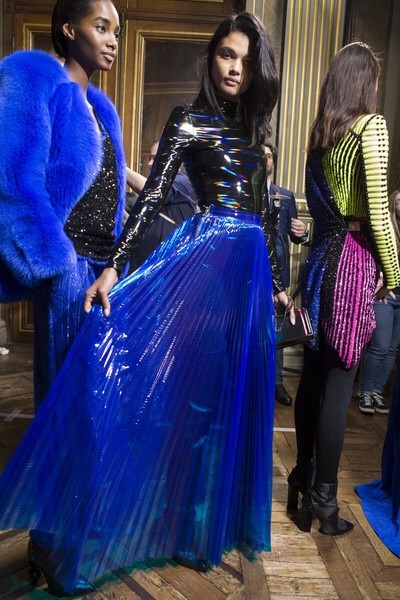
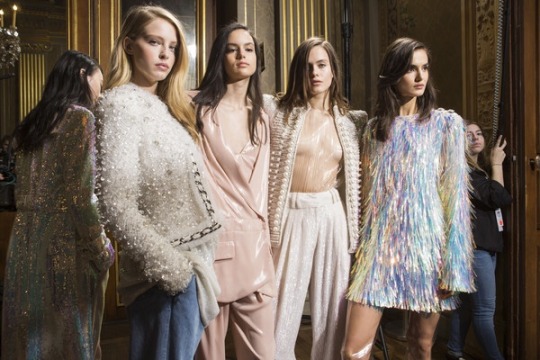

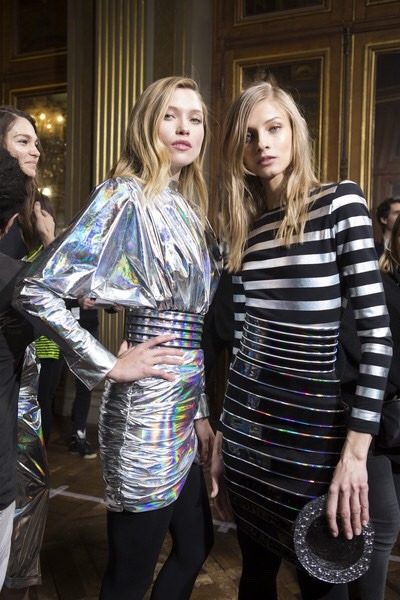




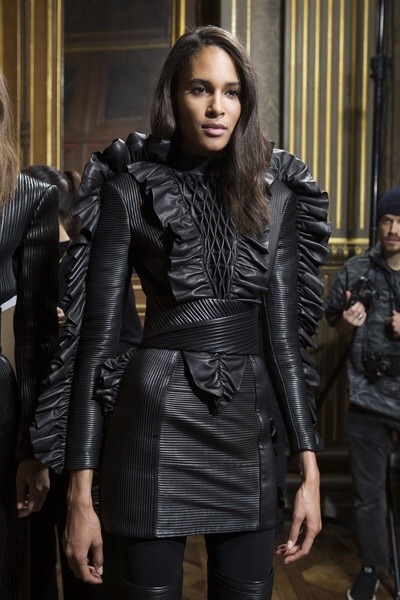

🍦Ice Cream 🍦Supermodels Fashion Diary: Balmain A/W18 Fashion Show Backstage
1K notes
·
View notes
Text
Retail Trends to Adapt for the Future
Megan Jenkinson
Fashion Communication, Northumbria University
Sometimes shopping happens on impulse, however other times thought goes into a purchase and deciding on the perfect brand, product or style whether it being a large or small purchase.
However, a study into Consumers in the Micro-Moment show that 90% of smartphone users are not entirely sure of the specific brand they want to buy from when they start their shopping. Most people are not brand committed, so when it comes to that final decision, how do retail companies stimulate consumers to buy into their brand?
Retail trends in 2018 show that they could see a further acceleration in store closures as retailers finally get to grips with transforming their portfolios in order to fit into the online market, where the rest of the market is. Competition is high, and companies need to connect with their consumers in order to face this. Retailers that step up their social media strategies will thrive. This is due to the new generation of consumers interacting with social media in order to make their purchase decisions. The rise of Instagram Stories, Facebook Live and Snapchat have shown how retailers can change to interact with consumers on online platforms.
The key to successful activism is clear in being sincere, both to yourself and your consumers as the pre-eminent generation of consumers have never been so socially conscious.
Consumers are now being more mindful of their purchases due to wanting a healthy and environmentally friendly lifestyle. More shoppers are choosing products that are sources responsibly and are good for their bodies and the environment. Retailers that have placed health or sustainability at the core of their business are thriving.
Due to everything rapidly becoming online based, in-home services such as delivery will help the market. Consumers are becoming lazier with leaving the house to buy commodities, so retailers need to engage customers by connecting with them in their homes. Platforms that connect with the consumer in order to provide things that are easier for the consumer are a huge step forward.
The future is bright for retailers who adapt to the needs of their consumers and the merchants who find success in 2018 are the ones who can evolve in the long-term with their consumers and build the customer relationship. However, it all depends on their target audience for example, Toys R Us has shut down due to Amazon taking over. This is because Amazon is an online platform delivering toys straight to parent’s doors with an option of next day delivery. Amazon looked into the insights in order to determine the best course of action and this therefore had an extremely negative impact on stores such as Toys R Us.
If retailers want to thrive in the coming years, staying immobile is not an option.
0 notes
Text
The British Fashion Council
Megan Jenkinson
Fashion Communication, Northumbria University
A key role in the United Kingdoms (UK) creative sector is supported by The British Fashion Council (BFC), a not-for-profit organisation which aims to further-deepen the interests of the British Fashion industry to share collection knowledge, experience and recourses. It promotes excellence in the creative field with the use of promotional events. It helps increase brand value as well as intensifying the economic impact with a concrete impact. The BFC is a highly recognised resource for the economy, helping open doors to individuals in need of employment in the industry and to benefit them in their career in the creative sector.
Established in 1983, The British Fashion council is situated in London, founded by industry patrons and support from the government including the Mayor of London. The BFC’s attitude is to help organise the Fashion Awards, London Fashion Week Festival and ready to wear British brands as well as hosting some of the most known profiles in the Fashion industry.

The UK fashion industry is one of the most vibrant and creative businesses sectors in the country. The Fashion Industry is worth £23 billion to the general UK economy. The UK Fashion Industry is more than just ‘designer fashion’, where the attention is also aimed at the industry’s social impacts and economic influence. It has a high reputation as one of the global leaders of fashion design and trendsetting, where there have even been strong movements towards sustainability which has now attracted more than 37 designers. The BFC provided support in order to highlight the issues of sustainability and how sustainable clothing can be the way forward, which they emphasised this by hosting a launch and events during London Fashion Week.
Furthermore, I believe that the BFC are extremely skilled with promoting issues that the Fashion Industry are facing today. In 2009, the figures indicated an estimated value of £21 billion and a rise to £26 billion in just 2013. These figures have been able to indicate that the British Fashion Council has been and is still an incredible resource for our economy and is opening so many doors to many individuals within the creative sector as well as offering many support advantages.
0 notes
Text
Make way for Generation Z
Megan Jenkinson
Fashion Communication, Northumbria University
The large population bump coming up behind millennials. Generation Z, born between 1995 and the early 00s are the beginning of the new work force who are particularly crazy for the fashion markets and new digital platforms.
Generation Z. Who am I talking about? US! The carefree nature of young adults and teenagers is no more, as us Generation Z will soon be the University graduates, taking over the world with our new ideas, services and ways they want to look after our environment as in fact this is an issue arising every day.
How are Gen Zers going to do this? Nowadays, people are a lot more independent, where ‘Gen Zers’ are growing up in a more healthier economy and are taking life a different way. They don’t wait for parents to make decisions for us anymore, they make their own, being curious and driven.
The new generation, brand-conscious, tech-savvy and equipped with new ideas, Gen Zers have been born into the era in which the internet has always existed, and it never was the novelty. As a result of this, apps like Snapchat, Instagram and Facebook are all we know or what some of us can remember them first coming out! They are more aware of what is going on around us, resulting in being prepared for a global business environment. This is due to social media, where they are accustomed to engaging with friends all over the world and online interaction is giving them more of an inside to obtain relevant profession experiences.
0 notes
Photo

nowadays it’s easier than ever to make more mindful purchases and reduce your contribution to fast fashion and mass fabric and textile waste. “thrifting” encompasses more than physical stores like goodwill. apps and online shops like poshmark and thredUP have a wide variety gently used clothing. you don’t have to give up style in order to make better choices!
2K notes
·
View notes
Text
Fast Fashion: Is it a Trend Strategy?
Megan Jenkinson
Fashion Communication, Northumbria University
The high-street fashion industry has adopted fast fashion as a trend strategy. Brands such as H&M, Primark, River Island and online retailers have captivated the market through cheap fashion, online social media influence and consumer convenience.
Many fashion labels try to speak to their consumers through online magazines and videos and other online platforms. Fashion firms are constantly competing against one another for alternative forms and formats of clothing from the runway. Fast fashion provides new trends at a low price however, is this the way forward? The faster the fashion travels, the more toxic its effecting.
Speed has always been a pain point for the fashion industry where retailers are finding more ways to capitalize on the consumer demands for instant gratification at affordable prices. Retailers have been able to drive down apparel prices whilst overall costs have continued to creep higher and higher fuelling the consumer demand for cheap clothing.
Brands like H&M may not be a newcomer to the fashion market however, they have established themselves as a spearhead of the industry. They provide new trends at a low price, which is what we like to call fast fashion. H&M is creating customer interests, where they are appealing to the target audience, keeping the focus on the consumer and what they are wanting.
Social media is one of the most influential platforms of fast fashion retailers. Most consumers have at least one form of social media and these consumers crave fashion and lifestyle-related digital content. This inspires consumers as well as the side of entertainment. Fast fashion brands have learned to fuse the worlds of social media and shopping.
New technology is rising, and online shopping and social influence is becoming more of a social norm. It seems that fast fashion is becoming even faster, and it is a trend that won’t be slowing down anytime soon.
0 notes
Text
The Fast Fashion Industry. When will this STOP?
Megan Jenkinson
Fashion Communication, Northumbria University
My wardrobe is a bit excessive, I am not going to lie! However, this has made me think about how clothing is consumed and if other people purchase clothing just like me. Fast fashion is often inspired buy catwalk looks or celebrity styles however this is extremely bad for the environment and the cost and time it takes to get a product to a shop floor.
Fast Fashion is something pretty much all of us are slightly guilty of! My morning routine without a doubt consists of me telling myself I have nothing to wear, however my wardrobe space is at its maximum. I have clothing for all occasions, with enough clothing for everything that comes my way however none of this stops me from shopping. And why? Well, it makes us feel good! Clothes expresses ‘who’ you are as a person, however HOW many white t-shirts do we actually need?
There has been rapid movement within the Fast Fashion industry, where there has been a growth of 21% over the past three years where lives have been taken due to toxic chemicals used and pollution which has caused environmental damages and is having an effect on populations in the third world countries.
The world consumers about 80 billion new pieces of clothing a year, which is 400% more than what we consumers only two decades ago.
The Fashion industry is the world’s second highest pollutant, thriving off people buying and discarding items of clothing FAST. This has led to a multitude of dangerous environmental issues where large amounts of clothing is thrown away, sometimes only weeks after a purchase. But where does all of this go? Landfills. However, pieces of clothing are not compostable and end up emitting methane and harmful greenhouse gas (Newsweek).
According to ‘True Cost’, which is a life-changing documentary directed by Andrew Morgan who travels to places such as Bangladesh to see the sickening conditions our garments are being produced in says: “Cotton production is now responsible for 18% of worldwide pesticide use and 25% of total insecticide use.” The amount of natural resources required to keep fast fashion at its planetary pace which causes severe damage to our Earth. This helped me to broaden my knowledge as well as understanding more in regard to this topic.

Fast fashion is growing faster than the entire apparel industry.
ASOS, New Look, H&M and other low production retail stores are all guilty of Fast fashion. They have very fast turnovers as they have to deliver items to the market very rapidly. Sixty percent of our clothing is made using cheap polyester which is the worst culprit. Producing polyester requires a high volume of energy which uses fuel contributing to high emissions of carbon dioxide. This is not only affecting humans however also causing a disaster for natural habitats of animals and plants and diseases for the population living in these areas.
So, what does the future hold? Is this only going to get worse? It will be interesting to see how the landscape changes however, nobody really knows for sure on how the future of fashion will end up!
0 notes
Text
The Future of Fashion. How retail may change in 10 years time
Megan Jenkinson
Fashion Communication, Northumbria University
If we think about the past, and how consumers used to shop only 10-years-ago, it is completely different to what it is today. Instagram didn’t exist, direct-to-consumer labels didn’t exist, and most people didn’t feel safe with giving their credit cards to online retailers. I know this as a fact due to some of my older family members always telling me to be careful on the Internet when shopping. If the retail industry has changed so much in the past ten years, then what does the future hold for us?

If we think about the use of technology, it has increased in the last ten years massively. Everyone carries around a smart phone and will glance approximately every three seconds at it. Our addictions to social media, online retailers and our smart phones is becoming more of a time waster however, by 2026 our smart phones would have become so smart that it will be like carrying a shopping centre in your pocket as the shopping malls we currently enter may not exist anymore.
According to market research, mobile purchase or even ‘mcommerce’ will account for 49 percent of ecommerce. This is crazy! It will then force retailers to completely rethink the shopping experience, allowing them to stay at home and products come directly to your doorstep. We already have a delivery service which allows Next Day Delivery, however, some companies have already started the Same Day Delivery, and this will increasingly get more popular.

New clothing comes out all year round, however the future of fashion will be season-less, where more styles that we like will constantly come back in new and inventive ways. It will allow retailers to take more risks and design well-made products that may not stand out among a larger collection. People will start to buy more of what they think they will wear in the long term and their clothing will be stored in a technological based ‘Cloud’ just like Apples ‘iCloud’ where we will have more space to store clothing, allowing us to be more sustainable and keep more clothes that we do really love.
What do you think the future of fashion will hold? Do you think it could get dangerous?
0 notes
Text
Sustainability Threats the Fashion Industry is Facing
Megan Jenkinson
Fashion Communication, Northumbria University
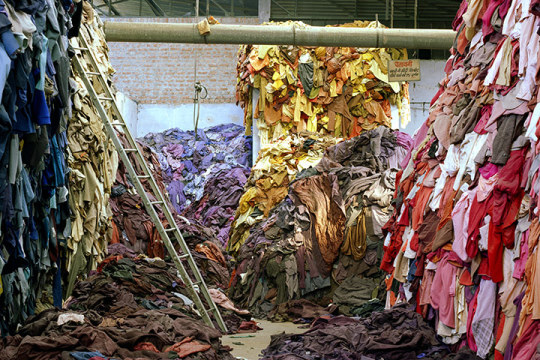
The fashion Industry’s needs for raw materials and labour-intensive production makes it vulnerable to environmental disruption. “Based on conservative projections, fashion brands’ profitability levels are at risk by at least three percentage points if they don’t act determinedly soon,” says Javier Seara. However, what is the industry actually doing about this? There are many threats to fashion businesses which could result in fundamental risk-taking.
If something doesn’t change in our current textile economy, we soon could be eating a meal covered in plastic. This is one of the treats that the fashion industry is facing however, this soon could be reality. Plastic microfibers come off of synthetic clothing in the washing machine, which are now entering our oceans. These microfibers are ingested by wildlife and travel up the food chain where they end up being consumed by us. How does this make you feel? Because to me, I find it scary.

It is becoming categorically clear that most recourses in the industry relies on fresh water due to dyeing and the treatment processes. “Over 70 percent of that water usage is in the agriculture of cotton, which is among the fabrics with the highest environmental impact along with silk, wool and leather.” However, the cost implications are increasing and the use of only using raw materials is believed to be weak in the long term. Landfills are overflowing which is not only bad for the environment however the use of energy is too valuable to lose to a landfill. Technology will need to figure out new ways to recycle in order for the fashion industry to operate on the single use of raw materials.
Another problem is due to the clothing disposability or the ‘wear once’, ‘I really needed it’ excuse. Considering that else than one percent of clothing is recycled, wearing an outfit a maximum of 10 times is a huge problem. This has lead landfills filling up and causing more and more ethical issues every second.
But how would we change this?
Reforming the fashion industry would be a difficult thing to do however encouraging brands to design garments which are easier to recycle is an option in which will help deadly fumes going into our air. This may be one of the only options which can help our planet in the long term in order to keep humans, animals and the environment alive.
0 notes

